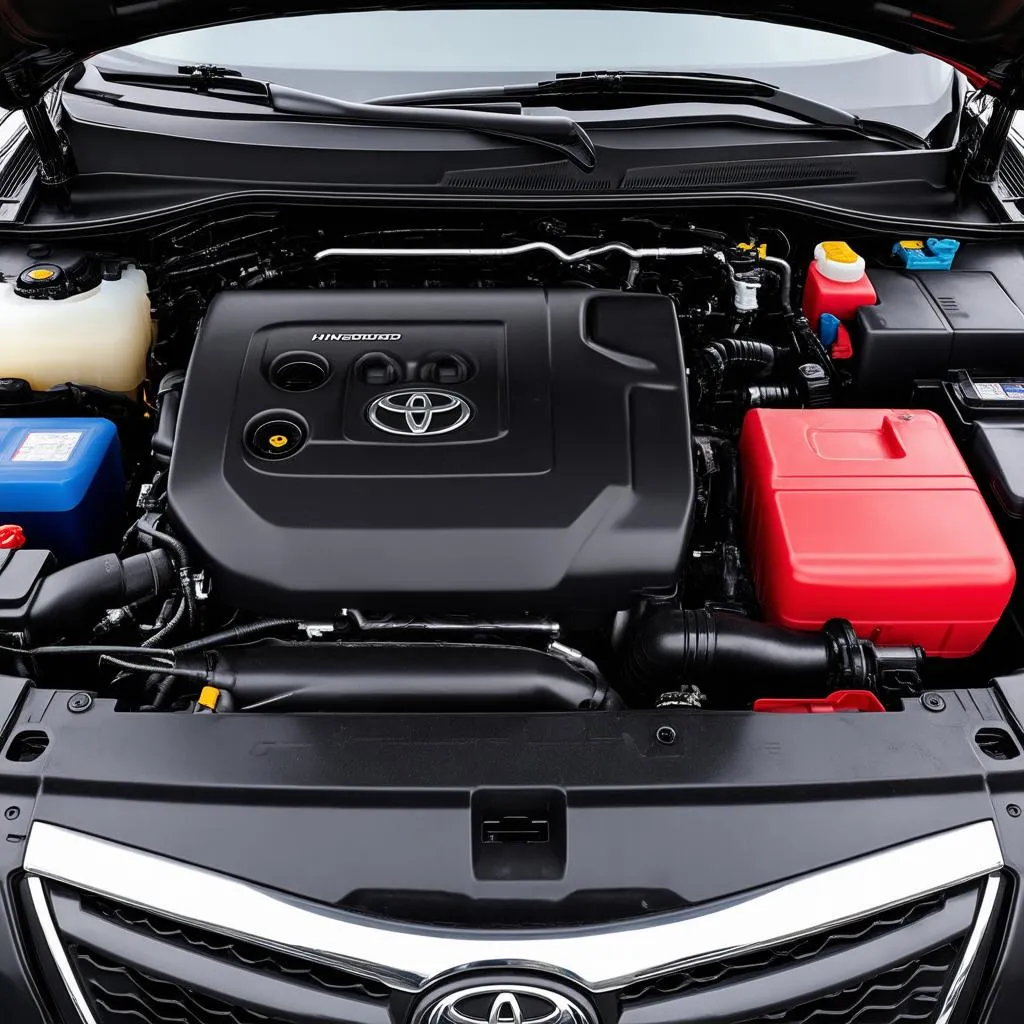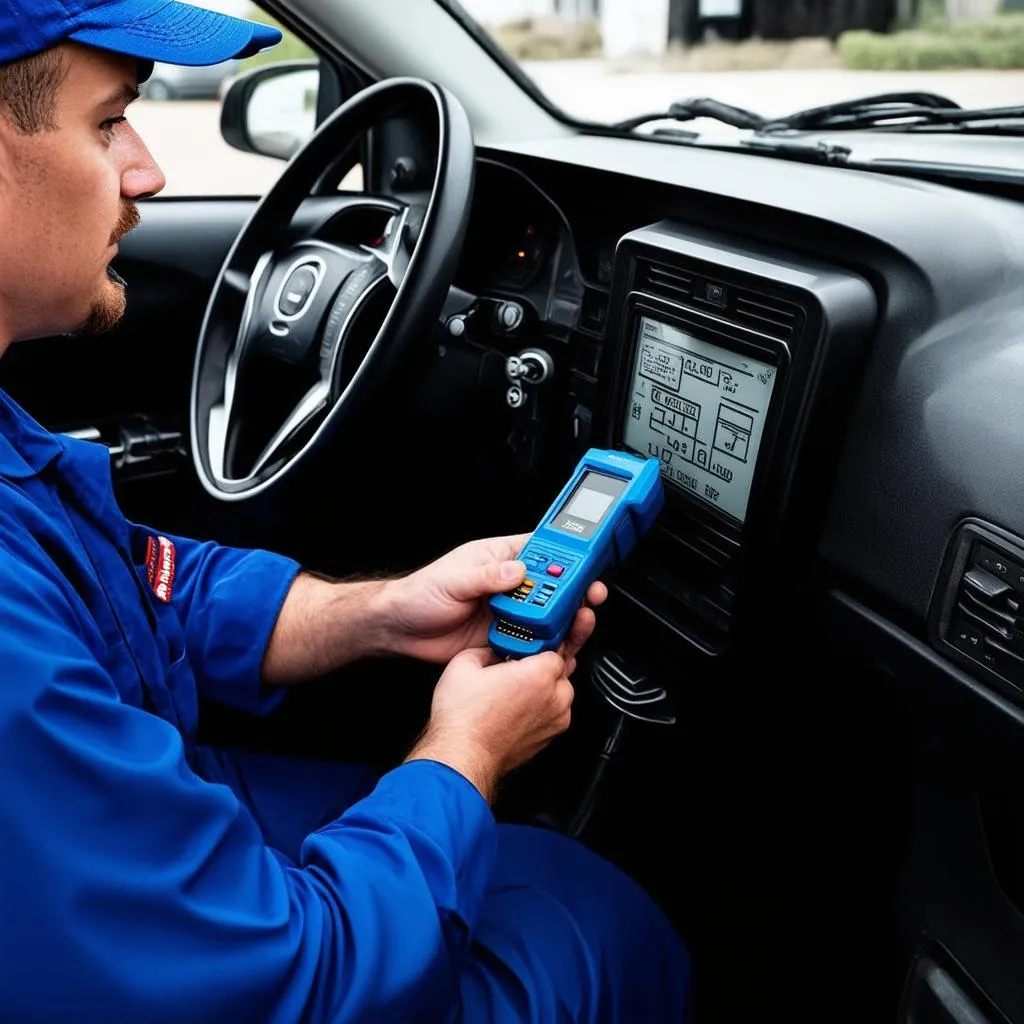So, you’re cruising down the Pacific Coast Highway, California sunshine in your face, the wind in your hair, and suddenly, the check engine light on your 2013 Toyota Highlander decides to ruin the vibe. You pull over, grab your trusty OBD-II scanner, and bam – you’re greeted by the dreaded P0128 code. Don’t worry; we’ve all been there. This code means the engine coolant temperature isn’t rising as quickly as it should, indicating a potential problem with your Highlander’s cooling system. But what does it all mean, and how worried should you be? Let’s dive in.
Understanding the P0128 Code: What’s the Big Deal?
Before we panic, it’s essential to understand what this code signifies. The P0128 code, in simple terms, means your Toyota Highlander’s engine is taking too long to reach its optimal operating temperature. Your car’s computer, the Engine Control Module (ECM), uses the coolant temperature sensor to monitor this. If the ECM detects that the engine isn’t warming up fast enough, it triggers the check engine light and stores the P0128 code.
Why Does it Matter?
A properly warmed-up engine ensures optimal performance, fuel efficiency, and reduced emissions. When the engine takes too long to heat up, it can lead to:
- Increased Emissions: A cold engine burns more fuel and produces more harmful emissions.
- Poor Fuel Economy: You might notice a dip in your gas mileage.
- Reduced Engine Performance: A cold engine might not deliver its full power and could feel sluggish.
Decoding the P0128 Code: Common Culprits
Now that we understand the “why” let’s look at the “what.” What could be causing your 2013 Toyota Highlander to throw this code?
1. Faulty Thermostat
The most common culprit behind a P0128 code is a stuck-open thermostat. The thermostat regulates the flow of coolant through the engine. If it gets stuck open, coolant continuously flows through the radiator, preventing the engine from reaching its ideal temperature quickly.
2. Low Coolant Level
Another possible cause is low coolant levels. Coolant plays a crucial role in regulating engine temperature. If there isn’t enough of it, the engine might overheat, and in this case, take longer to warm up.
3. Faulty Coolant Temperature Sensor
The coolant temperature sensor is the ECM’s eyes and ears when it comes to monitoring engine temperature. If this sensor malfunctions and sends incorrect readings, it can trigger the P0128 code, even if the engine is warming up correctly.
4. Other Potential Issues
While less common, other potential causes for the P0128 code include:
- Cooling Fan Issues: A cooling fan that runs constantly can prevent the engine from reaching optimal temperature.
- Water Pump Problems: A failing water pump won’t circulate coolant efficiently, affecting engine warm-up time.
- Wiring Problems: Damaged wiring or loose connections related to the cooling system can also be culprits.
Tackling the P0128 Code: What to Do?
Now, the million-dollar question – how do you fix this? While the P0128 code itself might not be a cause for immediate panic, it’s crucial to address it sooner rather than later to avoid potential long-term damage. Here are a few steps you can take:
1. Check Your Coolant Level
Start with the easiest step – pop open the hood (when the engine is cool!) and check your coolant level. If it’s low, top it off with the recommended coolant type for your Highlander.
2. Inspect the Thermostat
If the coolant level looks good, the next step is to check the thermostat. This part requires a bit more technical expertise, so you might want to consult your mechanic, especially if you’re not comfortable working on your car.
3. Test the Coolant Temperature Sensor
The coolant temperature sensor can be tested using a multimeter. Again, if you’re not familiar with car electrics, it’s best to leave this to the professionals.
4. Seek Professional Help
If you’ve gone through the basic checks and the problem persists, it’s time to call in the big guns. A qualified mechanic can accurately diagnose the issue using a professional-grade OBD-II scanner and recommend the best course of action.
Frequently Asked Questions About the P0128 Code
Can I still drive with a P0128 code?
While you might be able to drive for a short distance with a P0128 code, it’s not recommended. Ignoring the problem can lead to further damage and potentially costlier repairs down the road.
How much does it cost to fix a P0128 code?
The repair cost depends on the underlying cause. A simple thermostat replacement could cost a few hundred dollars, while a more complex issue like a faulty water pump could set you back over a thousand dollars.
Can a bad battery cause a P0128 code?
While a weak battery can cause all sorts of electrical gremlins in your car, it’s unlikely to be the direct cause of a P0128 code. This code is primarily related to the cooling system, not the battery.
Don’t Let the P0128 Code Rain on Your Parade
A check engine light, especially with a code like P0128, can be unsettling. But remember, knowledge is power. By understanding what the code means and what might be causing it, you can take the right steps to get your 2013 Toyota Highlander back in tip-top shape.
 2013 Toyota Highlander Engine Bay
2013 Toyota Highlander Engine Bay
Remember, regular maintenance and addressing any warning signs promptly can save you a lot of headaches and expensive repairs down the line.
Need More Help? We’re Just a Message Away!
Still, feeling lost or need expert advice? Don’t hesitate to reach out to our team of automotive experts via WhatsApp at +84767531508. We’re available 24/7 to help you troubleshoot any car issues and guide you towards the right solution.
 Car Diagnostic Tool in Use
Car Diagnostic Tool in Use
Happy Driving!